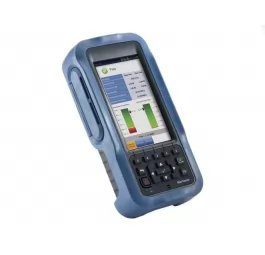Copper Line Testers
ET91 - high frequency communication tester
Ручной измеритель уровня для монтажа и обслуживания сетей
EDA10 - communication protocol tester
Ручной тестер для монтажа и обслуживания сетей, позволяющий проводить тестирование различных интерфейсов передачи данных.
MAX-610 - copper tester
ручной тестер для монтажа и обслуживания широкополосных сетей
MAX-605 - copper tester
Ручной тестер начального уровня для монтажа и обслуживания широкополосных сетей, позволяющий проводить паспортизацию медных линий.
MAX-630G - multiplay tester
ручной тестер для монтажа и обслуживания широкополосных сетей, позволяющий проводить анализ протоколов DSL/G.fast
MAX-635G - copper and multiplay tester
ручной тестер для монтажа и обслуживания широкополосных сетей, позволяющий проводить паспортизацию медных линий и анализ протоколов DSL/G.fast.
Cable testers save a lot of time when testing power and communication networks. They make it possible to determine the integrity of the conductors, the correct installation of the connectors and the presence of damage. Today manufacturers offer such a wide range of testers that deciding on the right instrument is not an easy task, even for an experienced engineer. Let's see what classes cable testers are divided into, what functionality they have, and why they differ in price.
Devices can be roughly divided into classes based on their capabilities:
1. Testers to check the correct crimping of the twisted pair and the presence of damage.Twisted pair crimping circuit (RJ45 pinout)Checking the integrity of the cableThe presence of entangled pairs, cable breakage, short circuit
2. Testers for determining installation errors with measuring the cable length (by capacity).In addition to the functions already listed above, these devices add the measurement of the cable length and the distance to the break.
3. Professional testers for localization of faults with measurement of cable length (TDR method).Short-circuit distance measurement is added to the above functions.





